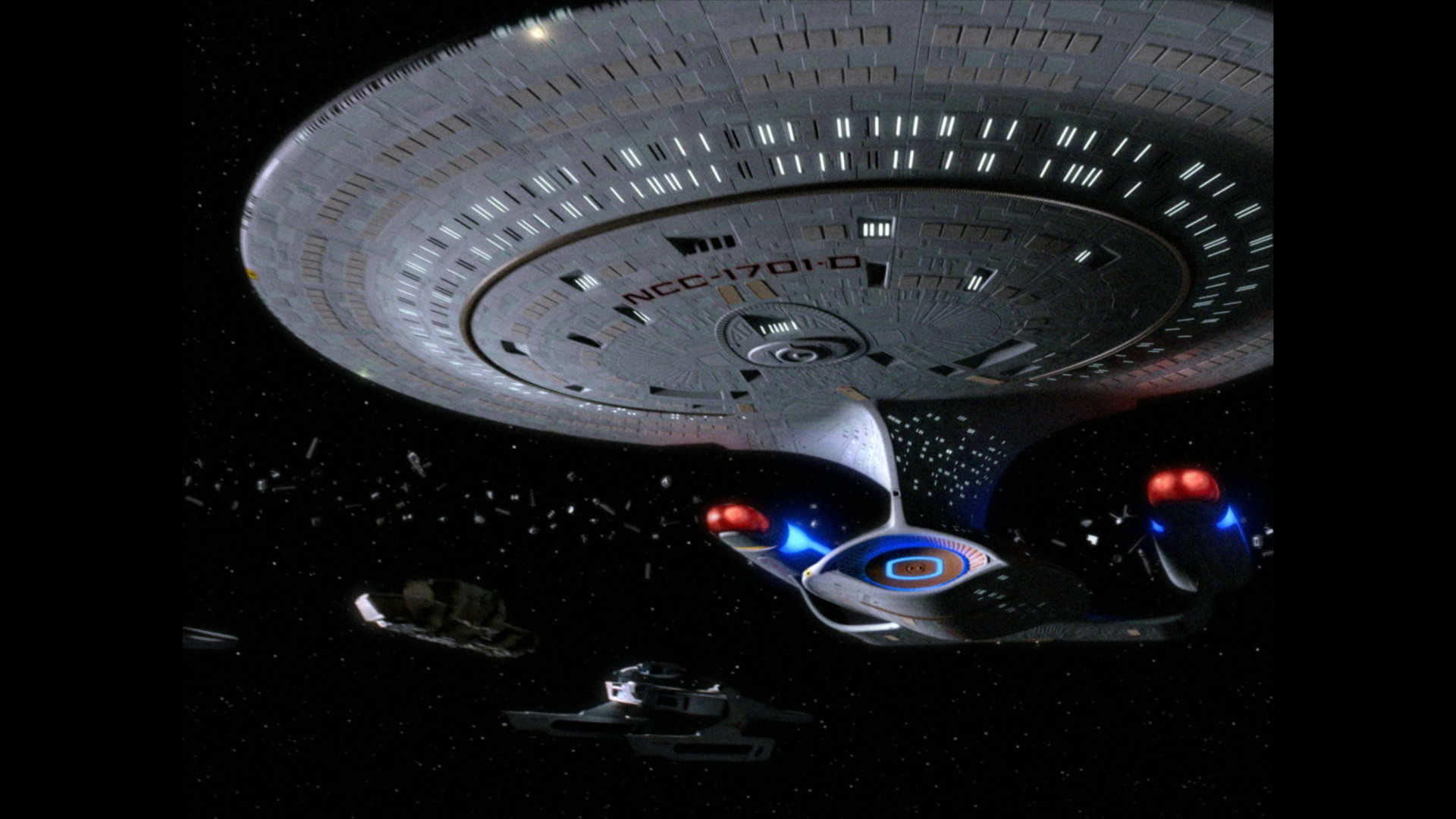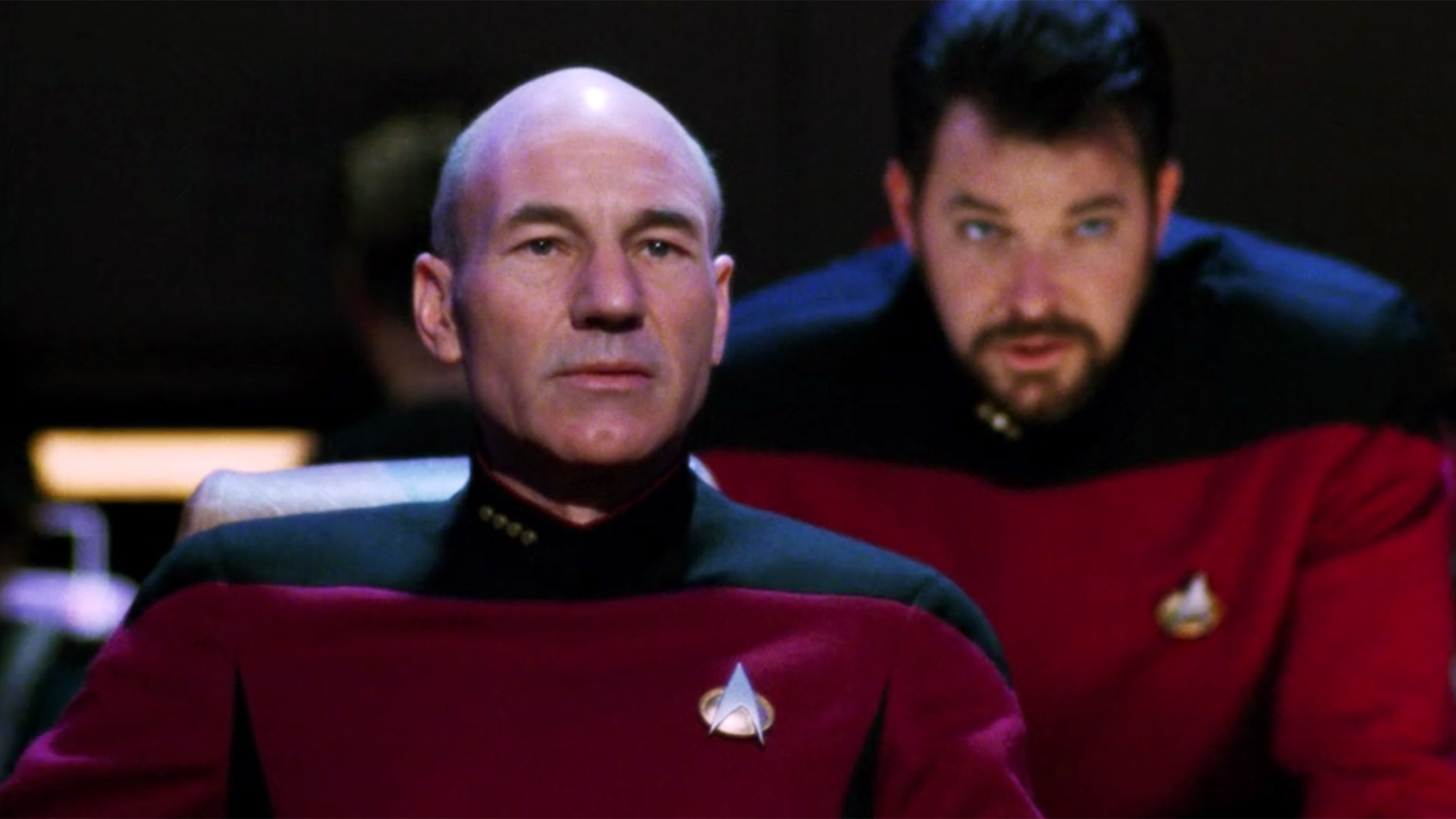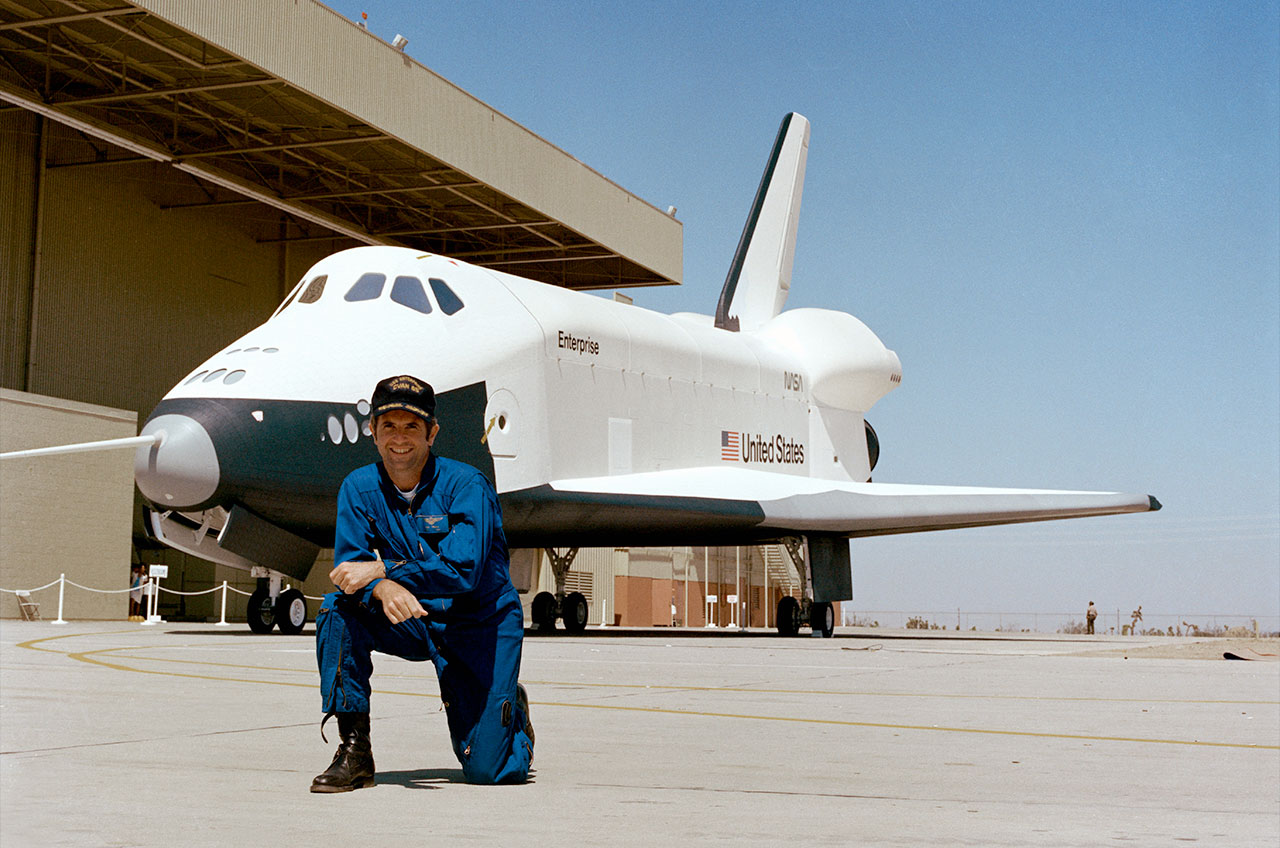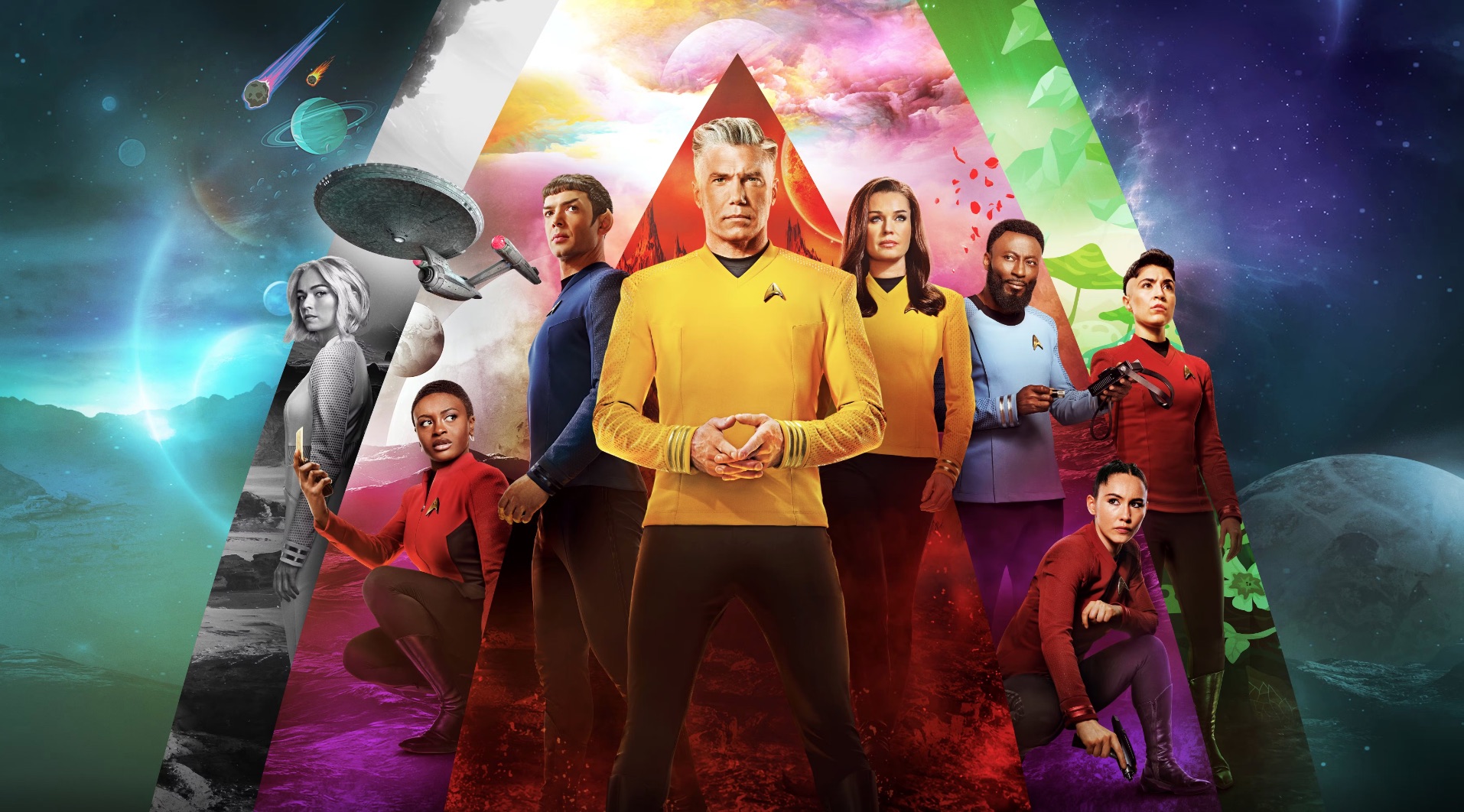
Since viewers first heard the tagline, "… to boldly go where no man has gone before," "Star Trek" has represented the hope of what space — "the final frontier" — can mean for humanity in a few centuries. First airing in 1966, the show became a phenomenon, spawning spinoff TV series, movies, books and games, and influencing culture and technology.
The franchise mostly follows the adventures of crews on the USS Enterprise, although some iterations took detours on space stations or other ships. Humanity is just one of a vast number of alien species participating in a quasi-military organization called Starfleet, whose main goal is to explore the universe for scientific reasons. Starfleet is an arm of the United Federation of Planets, which has a strict rule about interfering with the development of more primitive species. This "prime directive" sounds similar to NASA's planetary protection protocols for worlds that may host microbial life.
- Want 'Star Trek' on CBS All Access? Try a 7-day free trial
- Subscribe to CBS All Access for $5.99/month
History of the Star Trek franchise

"Star Trek" was created by Gene Roddenberry, a WWII veteran pilot who began writing freelance scripts while working as a police officer in Los Angeles, according to "Star Trek" fan site Memory Alpha. Famously, NBC executives did not like the first pilot. They reportedly said the show had too little action and was "too cerebral" for viewers; however, they offered the chance for a second pilot. Except for Spock (Leonard Nimoy), an alien from the planet Vulcan, the cast was completely switched out for a different crew, led by Capt. James T. Kirk (William Shatner).
"Star Trek" first aired in 1966. The series followed the adventures of the USS Enterprise on a five-year mission to "explore strange new worlds, to seek out new life and new civilizations, to boldly go where no man has gone before." Many of the episodes were allegories about issues embroiling society in the 1960s, such as race, war and peace, and the generation gap. However, the show was cancelled after only three years into the mission due to ratings concerns, according to Memory Alpha. Syndicated reruns of the series began soon after, though, and kept the series alive in the minds of fans. In fact, thousands of fans attended the first "Star Trek" convention in 1972.
The series was briefly revived as an animated series in 1973-74, and Roddenberry began developing a new series, "Star Trek: Phase II," in 1975. Those plans were changed after the success of "Star Wars" and "Close Encounters of the Third Kind." Instead, the plan was expanded and became "Star Trek: The Motion Picture." Overall, the original series (or "TOS") spawned six motion pictures between 1979 and 1991 (plus a partial appearance by some members of the original crew in a 1994 film).

The franchise's newfound success eventually led to the creation of "Star Trek: The Next Generation" (1987-1994), which was set many years after the original series, with a new USS Enterprise helmed by Captain Jean-Luc Picard (Patrick Stewart). This generation of "Star Trek" tackled issues such as racism, gender and torture, according to Memory Alpha, and remains one of the most popularly cited series to this day. "TNG" also eventually moved into theaters, with four films between 1994 and 2002.
Roddenberry died in 1991. While "TNG" was still on the air, a different series, "Star Trek: Deep Space Nine" (1993-1999), premiered. The show followed the exploits of a crew on a space station, rather than the traditional starship. In recent years, the show has been hailed for its then-innovative approach to cable television; the plots of individual episodes were closely linked to each other, making it ideal for today's binge-viewing generations.

Other series carried the Star Trek torch through the years. "Star Trek: Voyager" (1995-2001) followed the exploits of a crew that was stranded light-years from home, led by the franchise's first main female captain, Kathryn Janeway (Kate Mulgrew). This was followed up by "Enterprise" (2001-2005), a prequel to the events of The Original Series, with Jonathan Archer (Scott Bakula) helming the first warp-drive-capable Enterprise.
Star Trek took a bit of a TV hiatus once "Enterprise" ended, with Trekkies waiting a whopping twelve years for the franchise's TV return, which came in 2017 with the debut of "Star Trek Discovery" on CBS All Access. The show took a grittier approach and garnered mostly positive attention for its darker storyline, alternate universe plot, and positive representations of same-sex relationships. The show ran for five seasons, ending in March 2024, but it also spawned several spin-off projects including the excellent "Star Trek: Strange New Worlds" series and the upcoming "Star Trek: Section 31" movie.

Speaking of Star Trek movies, the adventures boldly continued on the silver screen during that large TV hiatus. The Original Series came back to Hollywood with a reboot of the original characters of Kirk, Spock, and McCoy, and the rest of the original crew. The 2009 film ("Star Trek") was a hit and has so far spawned three other films — "Star Trek: Into Darkness" (2013), and "Star Trek Beyond" (2016). There have been persistent rumors of a fourth entry in the so-called Kelvin timeline, but the chances of that coming to fruition are dwindling.
Speaking of old favorites returning, we were also blessed with the return of Captain Jean Luc Picard in 2020 with the aptly named "Star Trek: Picard". It ran for three seasons and explored the legendary captain's exploits long after he handed over the keys to the Enterprise.

In addition to all the live-action shows, Star Trek also returned to the world of animation — for the first time since "Star Trek: The Animated Series" concluded in 1974 — with "Star Trek: Lower Decks" in 2020. Lower Decks follows the low-ranking support crew of the starship Cerritos and puts a more irreverent and humorous spin on the world of Star Trek. It's been wildly popular, with the fifth season landing on Paramount+ in December 2024.
2021 also brought us "Star Trek: Prodigy", an animated series following the young crew of the USS Protostar, under the guidance of a hologram of Captain Janeway. The show was canceled by Paramount after just one season, before being revived by Netflix for a second season.
As for the future of Starfleet's adventures, we've got "Star Trek: Starfleet Academy" coming in 2025. It's going to be set in the 32nd century, way after the mainline shows, and follows on from an event in "Star Trek: Discovery" known as The Burn.
Star Trek's impact on real-life space exploration

Perhaps the most famous example of the series' influence on real life took place in the 1970s. The United States was preparing to run test flights of the space shuttle program using a prototype vehicle called Constitution. In response, thousands of "Star Trek" fans staged a write-in campaign to the White House and NASA asking for the prototype shuttle to be named Enterprise. When Enterprise was indeed unveiled in 1976, most of the main cast of TOS was on hand. Enterprise was not designed to fly in space, however.
Decades later, space tourism company Virgin Galactic named one of its planned spacecraft VSS Enterprise, after the television show. The spacecraft, built in 2004, did several in-atmosphere tests in preparation for eventually bringing it and other prototypes into space. VSS Enterprise, however, was destroyed in 2014 during a crash that killed one pilot and severely injured another. The National Transport Safety Board later determined a unique "feathering" system — intended to slow down the spacecraft as it was in the upper atmosphere — deployed early and was the leading cause of the crash.

A few astronauts have appeared on "Star Trek" over the years, according to fan site Memory Alpha. Mae Jemison, the first African-American woman to fly in space, was on the 1993 sixth season episode of TNG's "Second Chances." She was visited on the set by Nichelle Nichols. While in space during STS-47, Jemison reportedly began shifts with Mission Control by quoting Uhura's famous line: "Hailing frequencies are open." Astronauts Mike Fincke and Terry Virts appeared on the series finale of "Enterprise" in 2005. They portrayed 22nd-century engineers who performed maintenance in the Enterprise's engine room.
Several Star Trek actors have recorded supportive messages for NASA, such as Nichols and Wil Wheaton (TNG's Wesley Crusher). Nichols not only recorded a video message, but also flew on NASA's SOFIA (Stratospheric Observatory for Infrared Astronomy) aircraft in 2015.
"Star Trek" actors have also bantered with real astronauts on Twitter, most notably early in Canadian astronaut Chris Hadfield's International Space Station mission in 2012-13 when he spoke with Shatner, Nimoy, Wheaton, and George Takei. (Shatner asked: "Are you tweeting from space?" to which Hadfield replied, "Yes, Standard Orbit, Captain. And we're detecting signs of life from the surface.")


After Nimoy died in February 2015, NASA sent out a tweet honoring the actor: "RIP Leonard Nimoy. So many of us at NASA were inspired by Star Trek. Boldly go …" European Space Agency astronaut Samantha Cristoforetti and NASA's Terry Virts took pictures of the Vulcan hand sign in orbit; the picture he beamed back to Earth coincidentally showed his hand over Boston, Nimoy's birthplace. But Virts said he didn't mean to do it, as when he heard the news about Nimoy's death he had only a few minutes to execute his idea before going to a pressing task on station.

And in a case of life (finally) imitating art, on October 13, 2021, legendary Star Trek actor William Shatner actually went into space, flying aboard the Blue Origin New Shepard vehicle.
Shatner was moved to tears by the experience, describing the mission as "unlike anything they described" and saying it was "the most profound experience I can imagine".
Star Trek technology in the real world
Several early "Star Trek" technologies have made their way into our everyday lives. "Communicators" are now cell phones, which connect to each other via satellite. Tricorders, which were used to gather medical information, are now available as MRIs — some of which are being developed for space. (In 2017, a medical "tricorder" received $2.6 million in prize money from the X Prize Foundation.) Crewmembers can also be seen using tablet computers on TNG, many years before they became available commercially.
However, human teleportation still eludes us, as does faster-than-light warp drive. In 2015, NASA downplayed several media reports that a "faster-than-light" propulsion system they were developing was on the verge of a breakthrough. "NASA is not working on 'warp drive' technology," officials said, adding that the research was "a small effort that has not yet shown any tangible results." Teleportation, meanwhile, has only been achieved on the quantum scale across a few miles.
Star Trek TV shows and movies

Numerous fan-made productions and series spinoffs (such as books and comic books) have been produced; however, this list represents the "official" films and television series that have been released. There are plans to release a fourth in the "rebooted" series of "Star Trek" films in 2019.
Television series
- Star Trek: The Original Series (1966-1969)
- Star Trek: The Animated Series (1973-1974)
- Star Trek: The Next Generation (1987-1994)
- Star Trek: Deep Space Nine (1993-1999)
- Star Trek: Voyager (1995-2001)
- Enterprise (2001-2005)
- Star Trek Discovery (2017-2024)
- Star Trek: Picard (2020 - 2023)
- Star Trek: Lower Decks (2020 - )
- Star Trek: Prodigy (2021 - )
- Star Trek: Strange New Worlds (2022 - )
- Star Trek: Starfleet Academy (2025 -)
Movies
- Star Trek: The Motion Picture (1979)
- Star Trek: The Wrath of Khan (1982)
- Star Trek: The Search for Spock (1984)
- Star Trek: The Voyage Home (1986)
- Star Trek: The Final Frontier (1989)
- Star Trek: The Undiscovered Country (1991)
- Star Trek: Generations (1994)
- Star Trek: First Contact (1996)
- Star Trek: Insurrection (1998)
- Star Trek: Nemesis (2002)
- Star Trek (2009)
- Star Trek: Into Darkness (2013)
- Star Trek Beyond (2016)
- Star Trek: Section 31 (2025)







